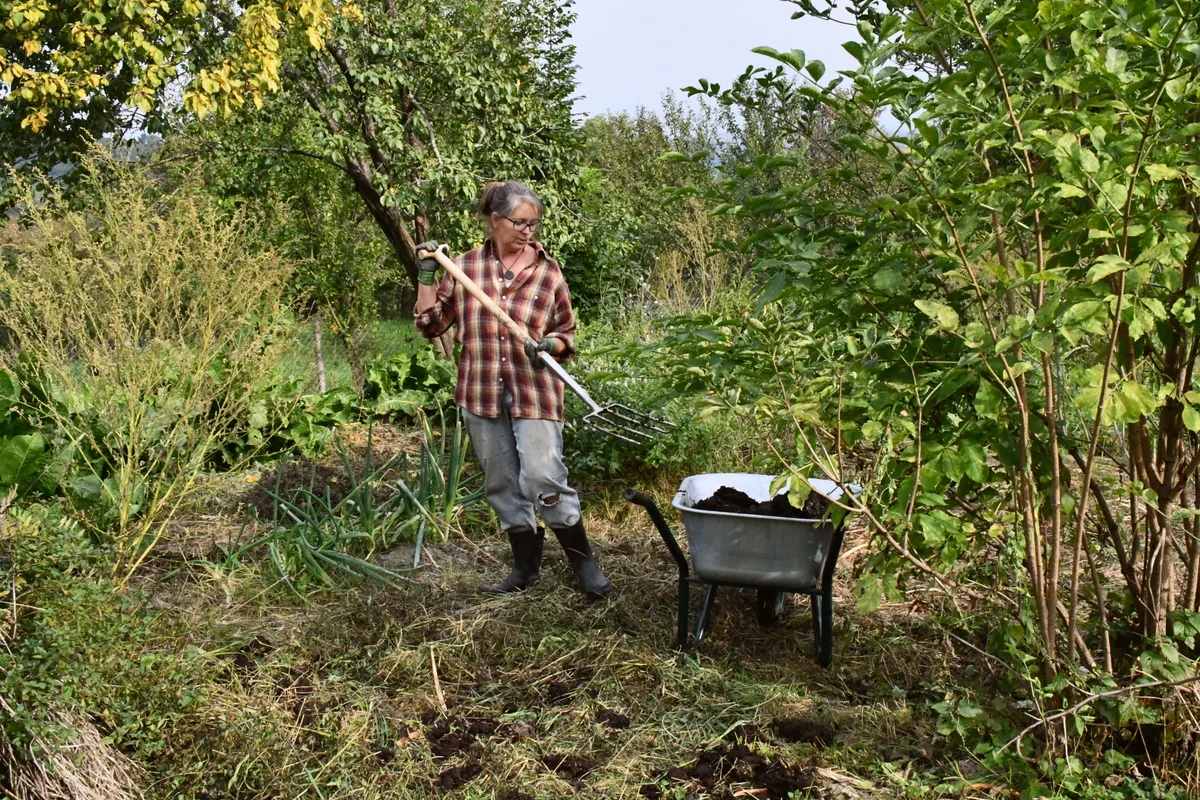
There’s always a certain sadness when the gardening season comes to an end, but don’t despair quite yet – there are still a number of pleasurable chores to get done in your no-dig garden.
Take in a sweeping view of your garden and look at the work to be done. It may seem overwhelming at first sight, though it’s usually not as difficult as it seems. If you break down the fall jobs into bite-sized tasks, you’ll get from weeding to harvesting, manuring and laying down a final blanket of mulch in no time at all.
Let’s get started!
1. Weed Out the Remaining Weeds.
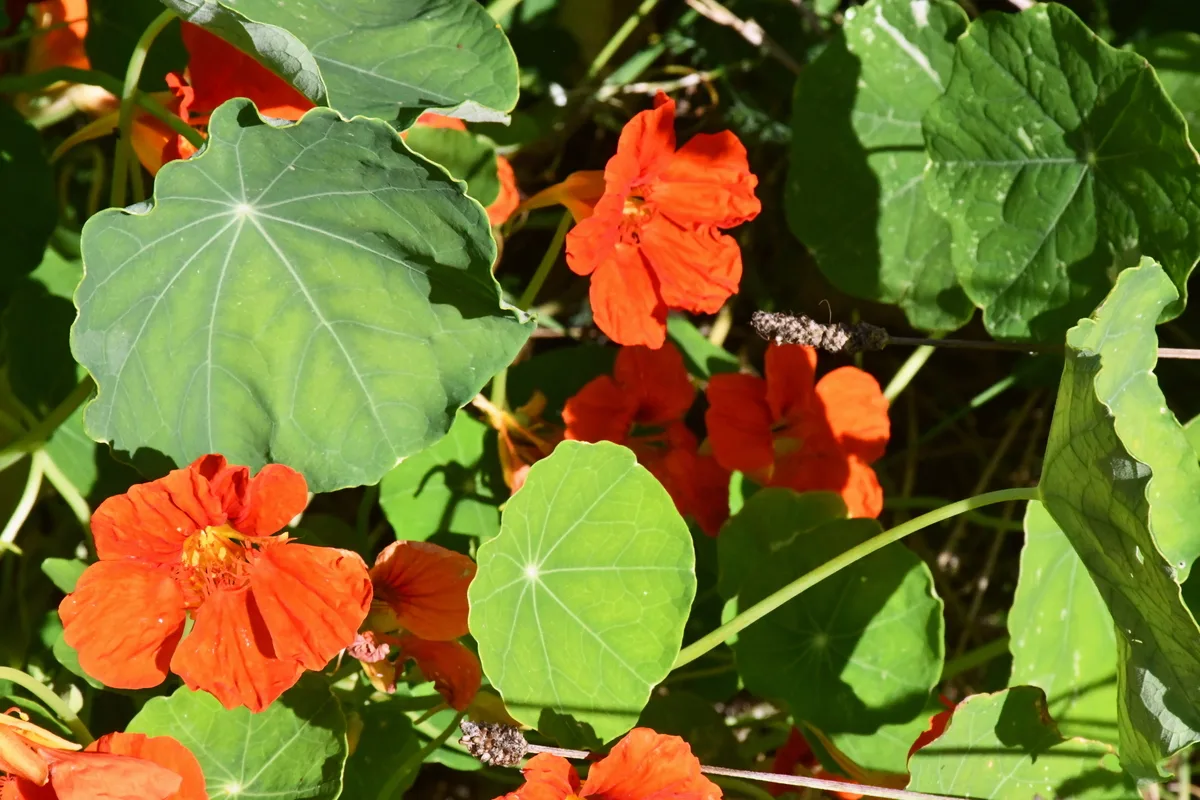
I know this sounds counter-intuitive. No-dig gardens aren’t supposed to have weeds, at least that’s what you’ve heard. But is that your experience?
In our garden, certain weeds are actually allowed. We eat some of them, we leave others for winter wildlife and nature has other plans for biodiversity. It often happens that plants we do not choose to keep, creep in.
There’s no other way to explain it than the soil is fertile, seeds last for multiple years in the soil and nature is abundant and productive. If I see a garden without weeds, I cringe at the thought of all the chemicals used to get rid of them.
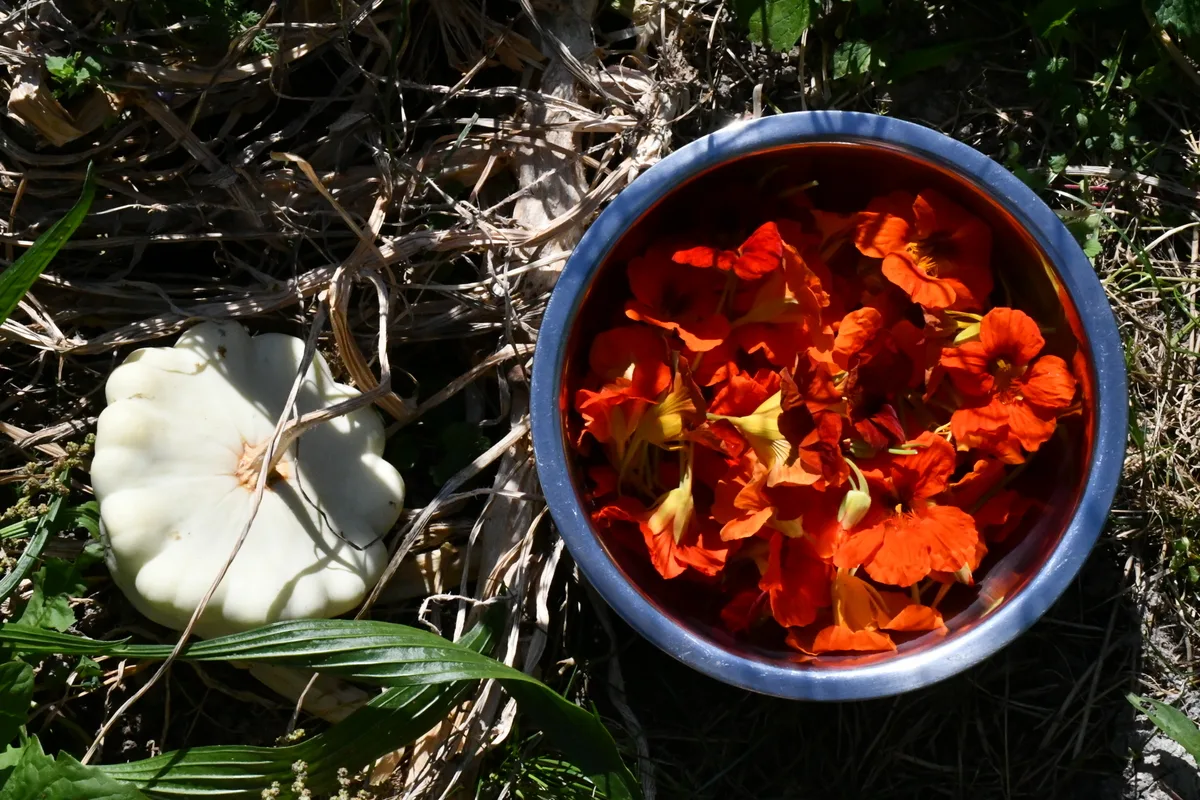
Go ahead and make a healing tea of that.
Weeding doesn’t have to be a big chore.
You just pull the ones you don’t want to see and get on with life, and gardening as it were. The less you fuss, the easier it will be.
By now, at the end of autumn, many plants are starting to die back and are actually easier to pull. That being said, it is your job to get rid of those plants that are “going to seed” responsibly. In our case, the thistles are burnt, so is another type of grass that appears to be invasive in our landscape. If you’ve caught those weeds in time, before the seeds are fully formed, they can be left to lay on the ground, or composted.
As a last resort, they can be tossed in the trash on the appropriate day in your neighborhood.
2. Harvest the Last Crops Before the Frost Comes.
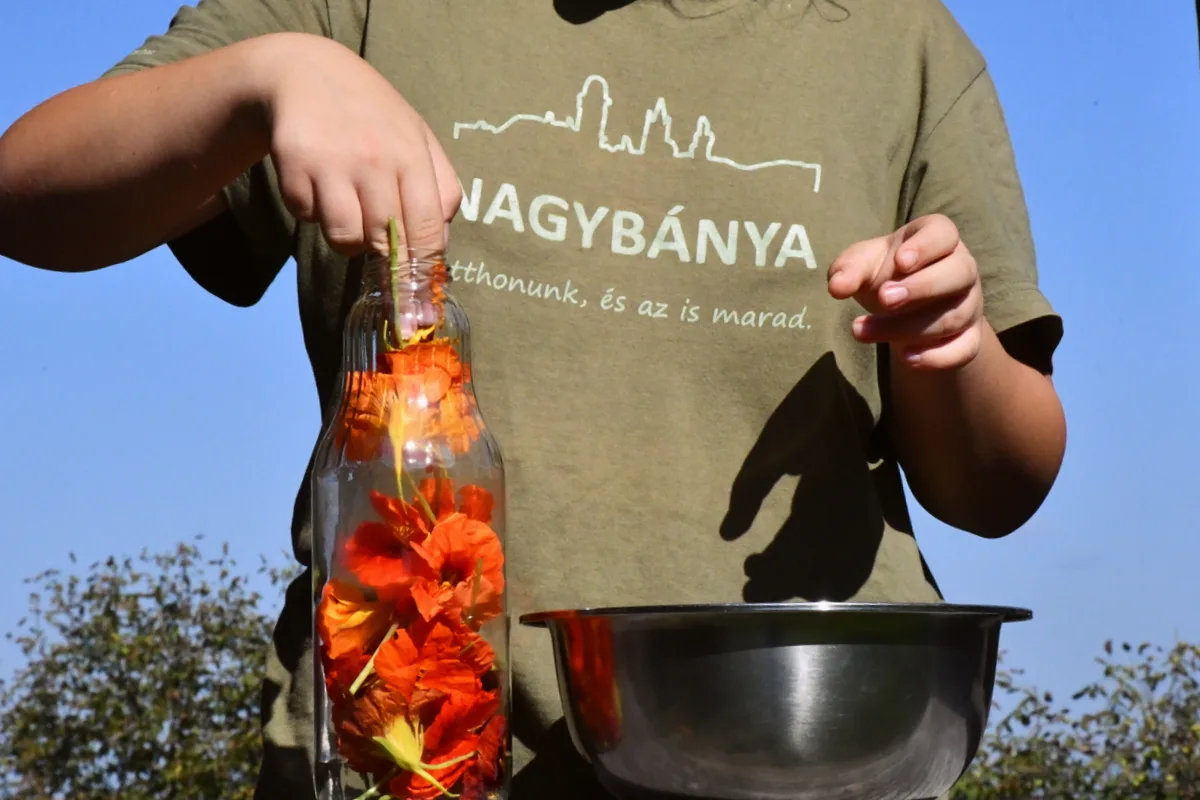
Depending on what you’ve grown in your garden, you may still have a few things to harvest. This will become very apparent if some weeds were previously hiding your stash.
Some of the last crops to glean in our garden this year are squashes, beans (for seeds) and nasturtium flowers.
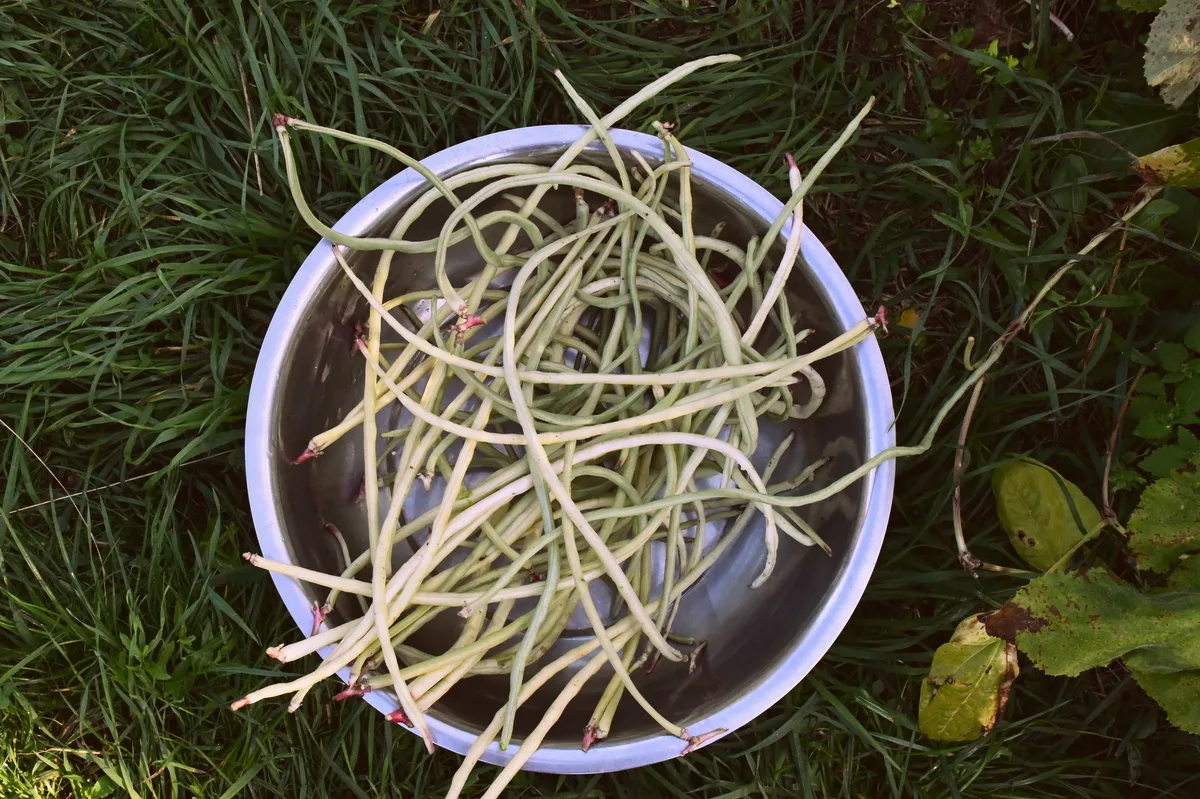
Yours might be beets, green tomatoes, carrots, pumpkins, Swiss chard or leeks. Kale leaves can still be harvested at any time, even after the first frost has come and gone.
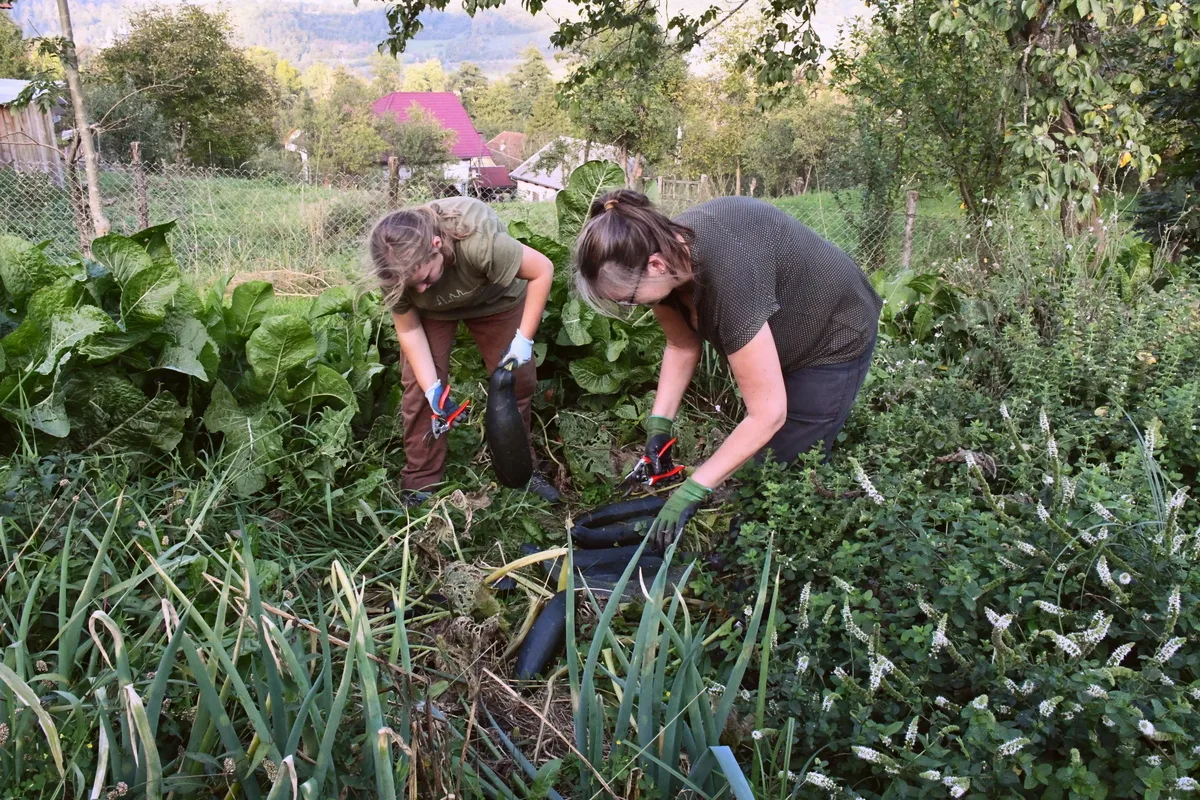
The bottom line is this: you’ve worked diligently all year in your garden, now is not the time to let things go to waste. If you have excess vegetables and fruits that might be difficult to store, gift them away while they are still ripe and beautiful.
At the same time, take stock of your seeds for future planting. Always save more than you think you’ll need. You don’t have to plant them all, seeds make wonderful presents for budding gardeners too.
3. Store Crops for Winter.
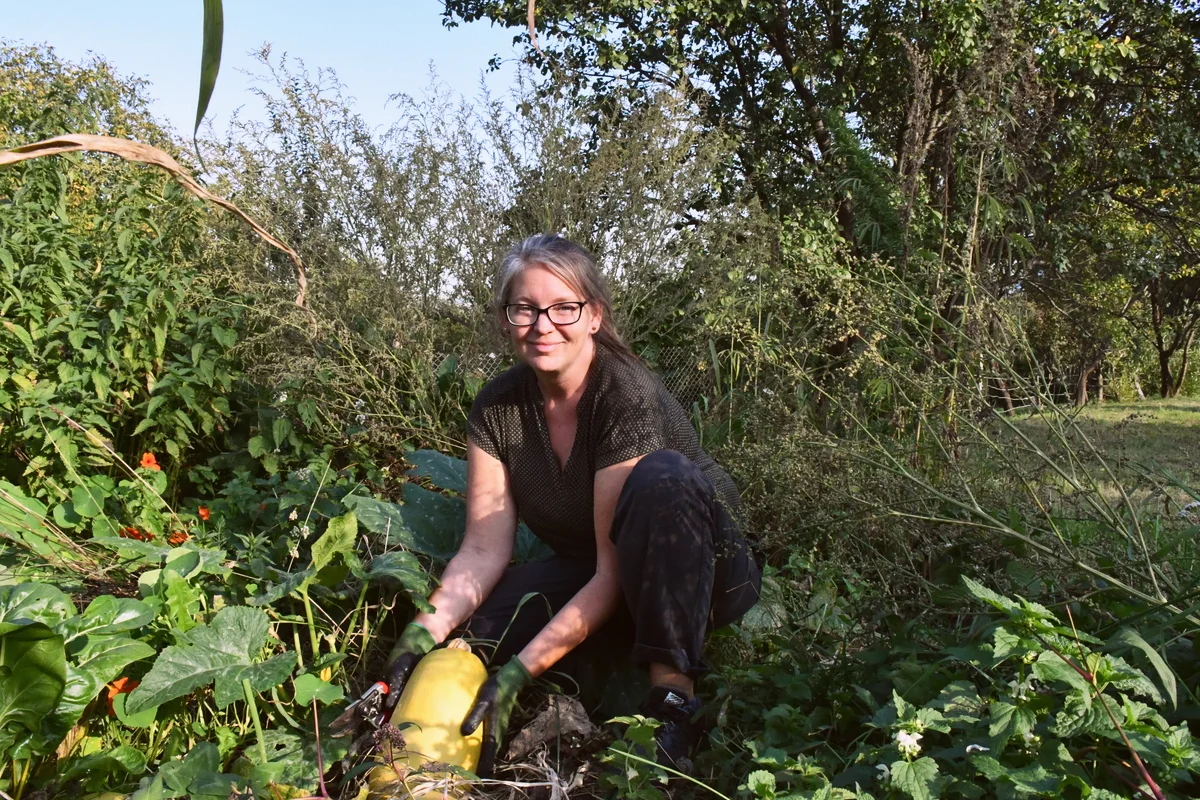
Harvesting crops in your no-dig garden is easy enough, plus it’s a lot of fun too.
Let’s say you store your squashes in the cellar. Sounds simple enough.
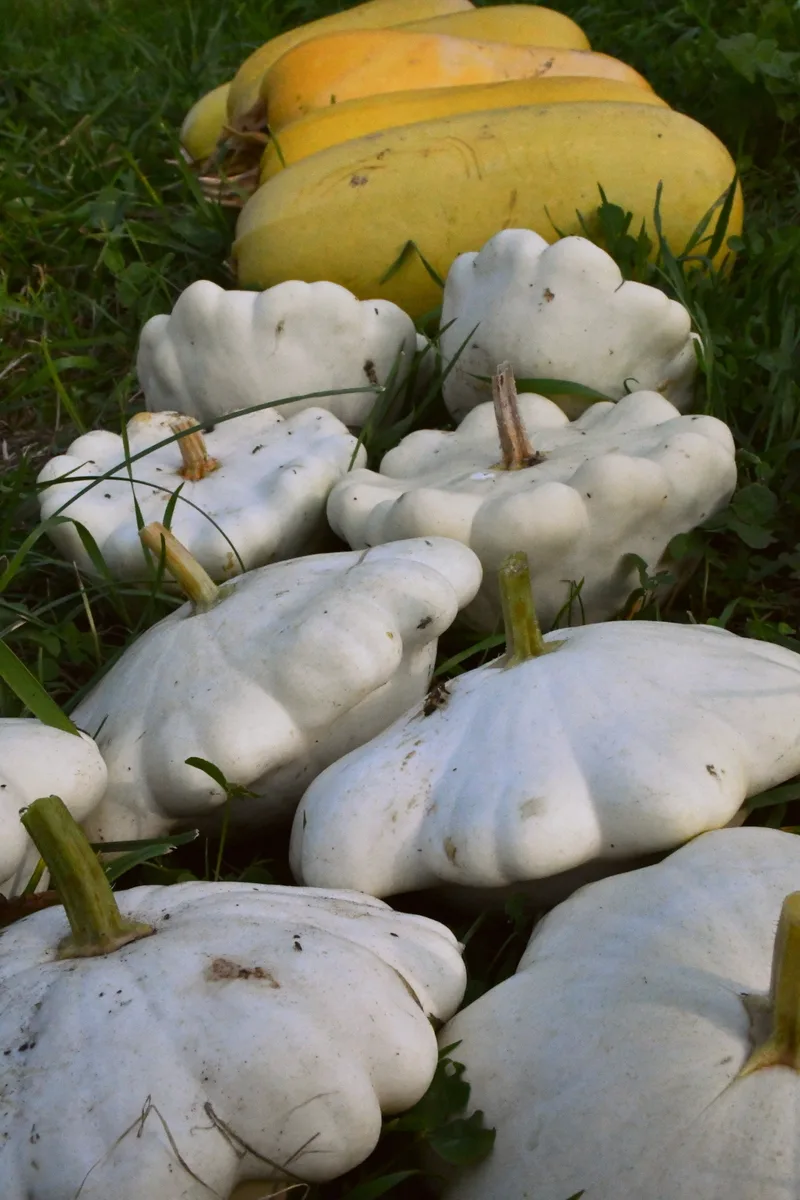
When it comes to storing them, however, there is room for user error. Maybe the temperatures are difficult to control, perhaps there is too much moisture, or rodents get in. Sometimes storing crops is up to chance, but if everything goes alright, you’ll be eating fresh squash well into winter.
Other crops, such as carrots and beets, can be stored in a crate filled with sand and sawdust. Cabbage can be stored for six months or more. Onions can last up to a year when properly stored.
And of course, there are always the options of canning, preserving and dehydrating. It all depends on the resources at your fingertips and your acquired skills. If you’d like to take your homesteading game a few steps further, the information out there is yours for the taking. My suggestion to you is to grab as many physical books on the subjects of organic gardening, self-reliance and homesteading as you can and attend as many workshops as humanely possible.
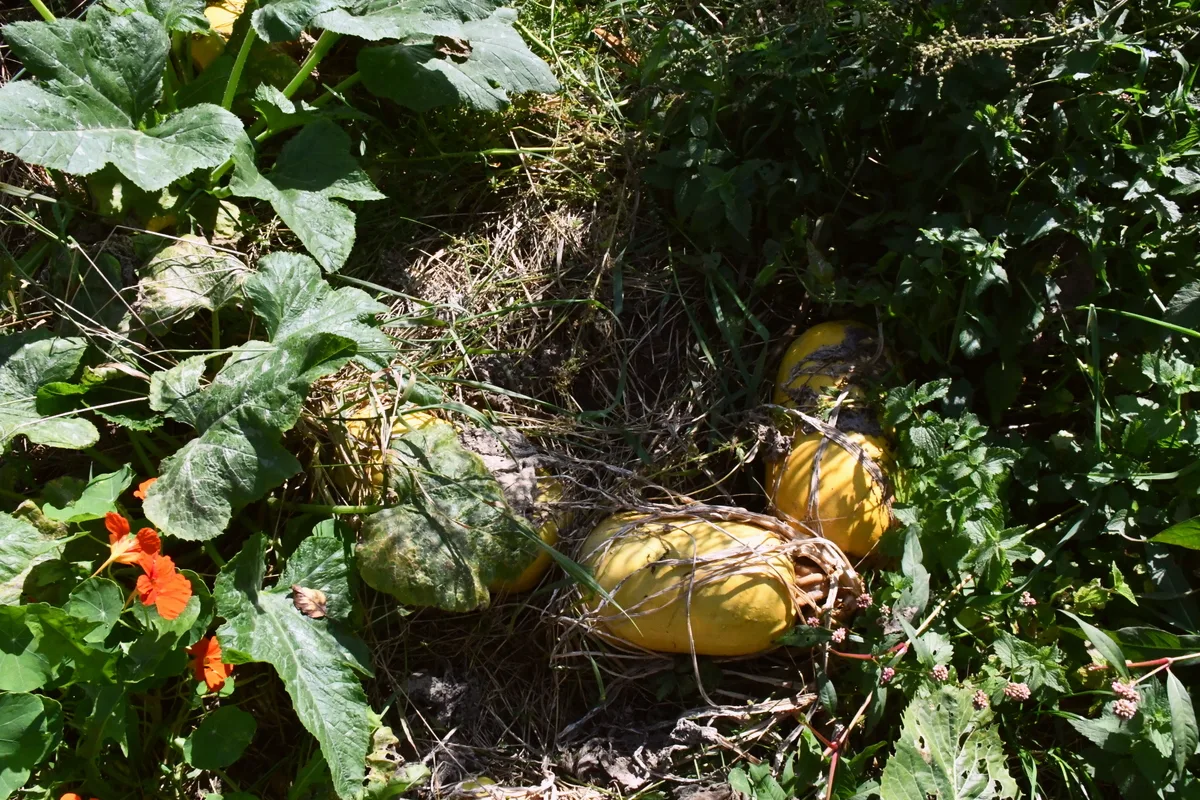
4. Sow Seeds in October.
When harvest time comes around, your brain may not be thinking of planting – for it’s already been done. Yet gardening is never done. In fact, it goes in so many circles, it’s enough to drive you crazy.
Once you find balance in the garden, you’ll begin to deeper understand the importance of continuity. See, the gardening season isn’t over just because October arrives on the calendar. For those of you living far north this may be the case, though most gardeners will be happy to know that there are still several seeds to sow, provided the ground is not frozen, and won’t be for a couple more months.
Seeds to sow in fall:
- beets
- winter radishes
- carrots
- hardy salad leaves
- spinach
- parsnips
- rutabaga
- turnips
- garlic
- onion bulbs
- cover crops such as vetch, red clover, alfalfa, winter rye and/or mustard
One of the problems that we’ve run into with late fall planting, is that at this time of the year, the soil is usually as hard as cement, even under all that mulch. Late summer and early fall tend to be very dry for us, so in order to plant, it’s helpful to water the ground well a couple of days before planting. To save your energy and natural resources, only water where you wish to plant.
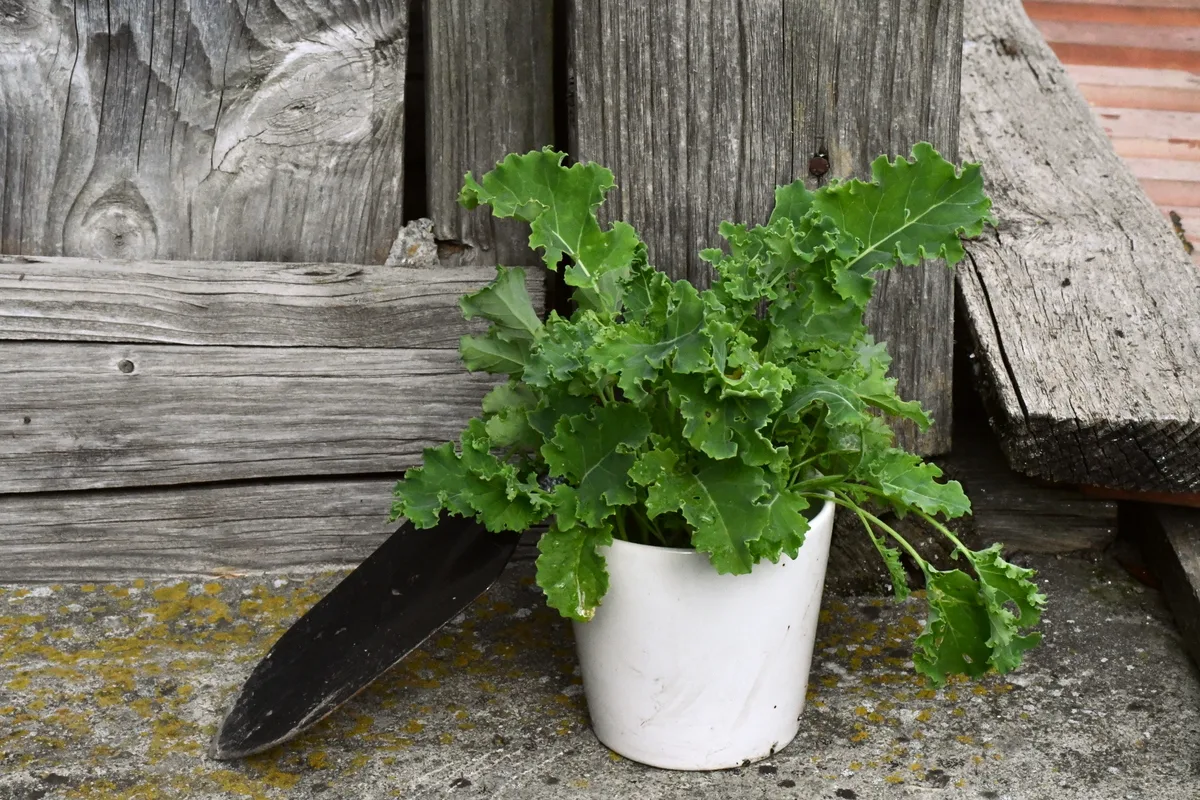
To make gardening even more complex, it’s wise to think about companion planting and succession planting for the year to come.
5. Take Care of the Vines, Leaves and Other Plant Material.
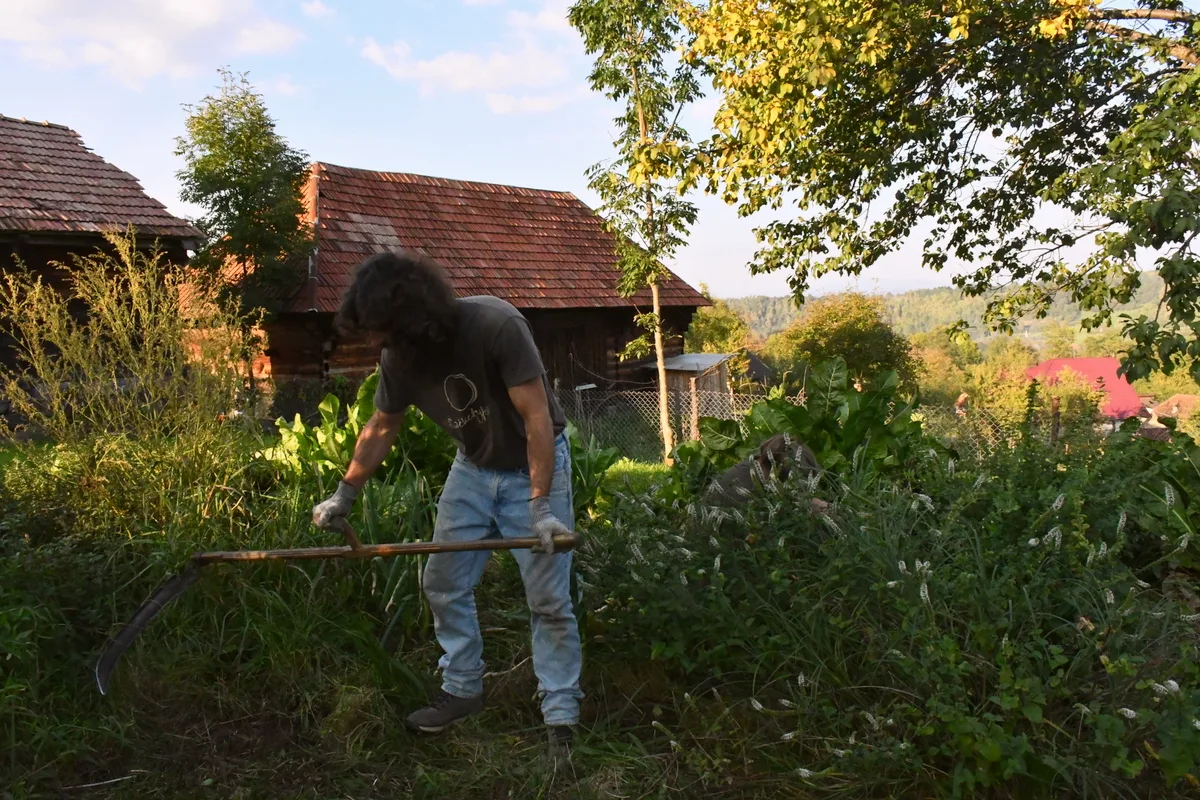
The fastest way to take care of the overgrowth in any garden, is to bring out your scythe. In a lucky case scenario, you already own, and know how to use, one. If not, perhaps now is the time to get on board with the ancient art of knocking down grass with a single blade.
If a garden is left to decay on its own, and it will, it often takes longer than you would like. Instead, we like to “help” nature do the job faster. Since all we take away from the garden is undesirable plants, the rest has to stay, thus providing free organic matter for the soil.
In order to take advantage of all the benefits that no-dig gardening has to offer, the best way to get the party started is to knock all those vines and stems down to the ground before frosts come your way. Within a few days it will already start to look like mulch, albeit a very thick one.
Later you can put manure/compost on top of this. Finally, add more finer mulch such as hay or uncontaminated straw to prepare your no-dig garden for winter.
6. Prune and/or Divide Perennials.
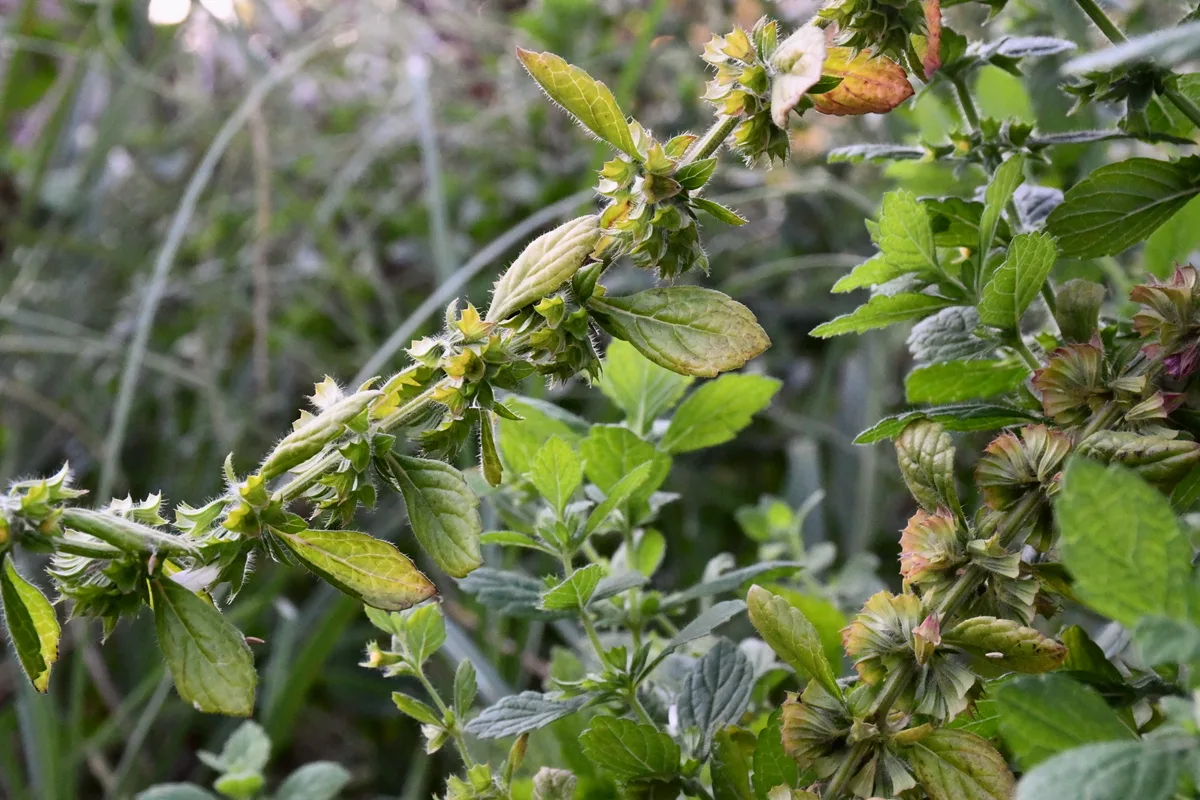
Whether you have perennials growing in your vegetable patch, or elsewhere in your yard, now is the time to take care of them. They may still be robust, as is our lemon balm (with a secret plan to take over the garden), or already in the wilting stage like perennial bunching onions. Those were divided in spring and are ready to make a comeback next year.
Let’s get back to lemon balm (Melissa officinalis) for a few lines.
If you don’t already have it in your garden, now (or spring) is a good time to plant it. And if you know someone who is digging it up and dividing it in fall, go ahead and ask for some.
It’s truly one of the most rewarding and useful perennials you can add to your garden. Lemon balm is perfect for healing teas, as well as for attracting summertime pollinators.
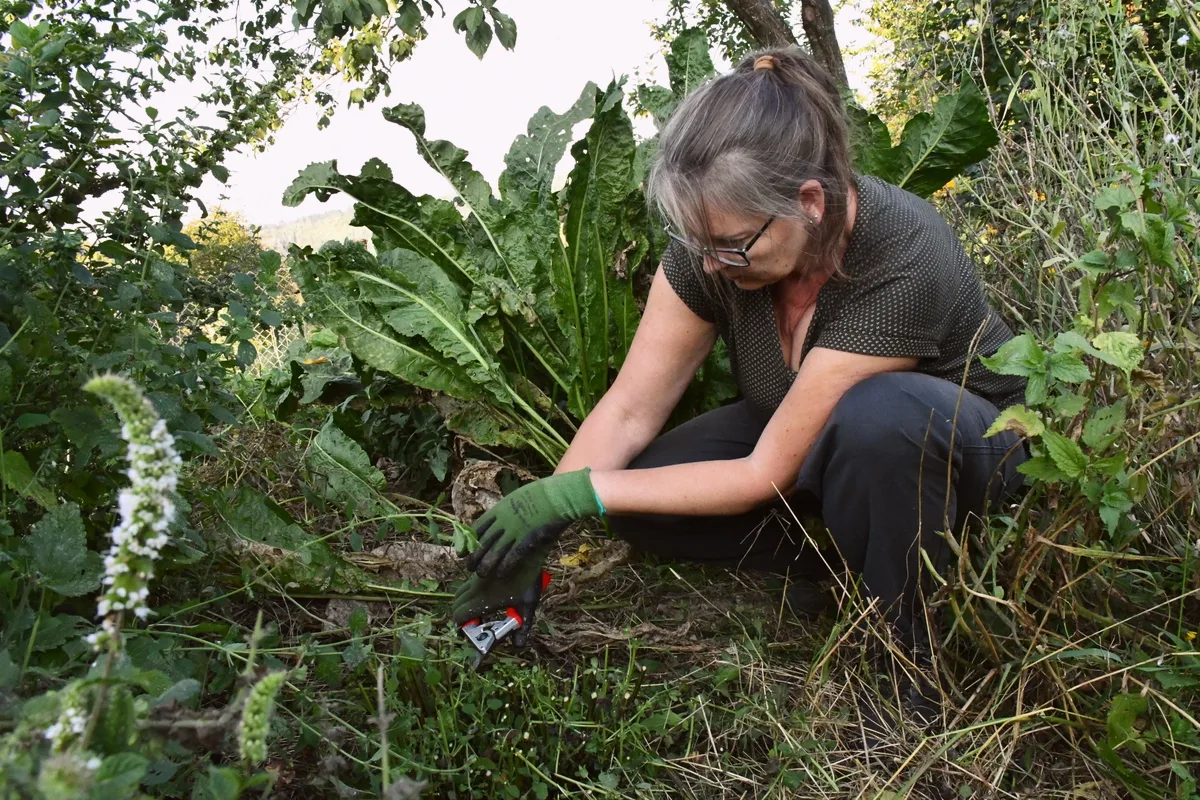
To prune it in fall, take your pruners and cut the stems back to 2-3″ in height. Even if the plant freezes back to the ground, the roots hold all the power and will come back strong in spring. Pruning certainly renews this vigorous plant.
You’ll notice that out of three plants, we’ve left one standing. Not only does this provide winter interest in the garden, overwintering critters can enjoy it as well.
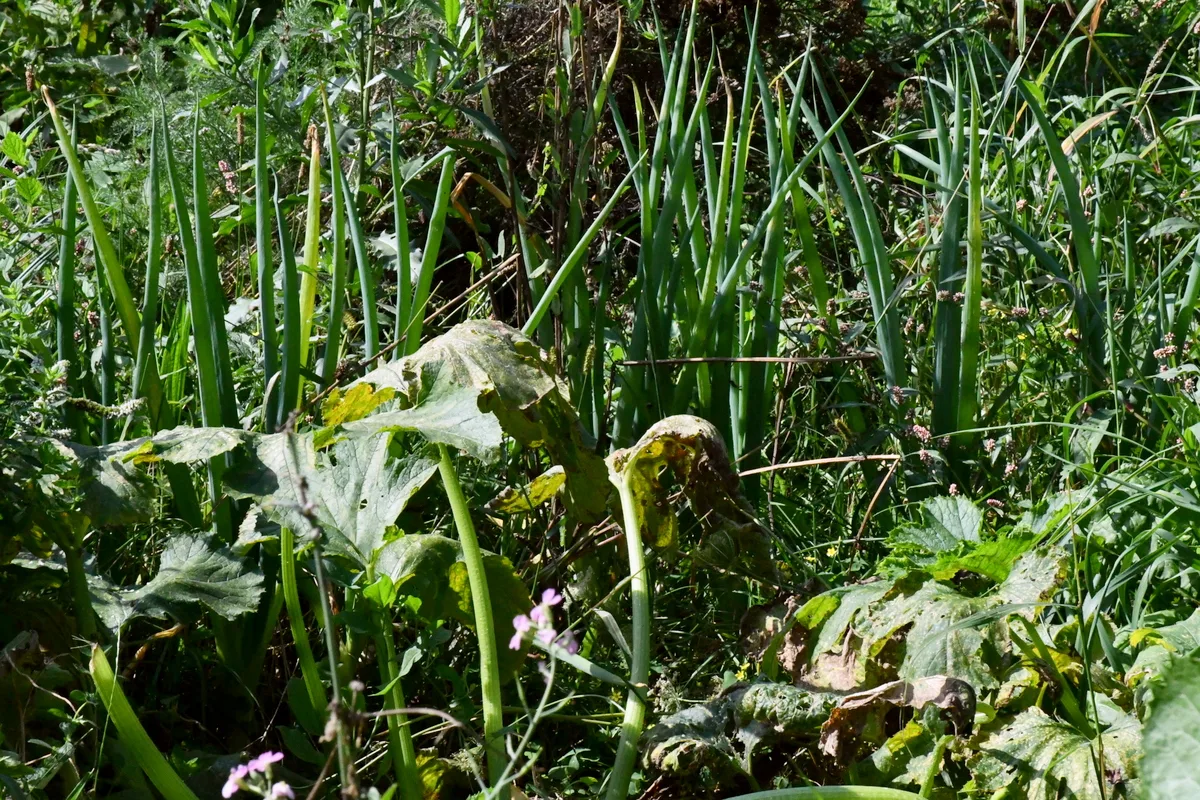
If you have other perennials to divide and multiply, check out Elizabeth’s article here.
7. Leave Late Blooming Flowers for Insects.
At the time of writing in early October, there are still some flowers in the garden. Nasturtiums as mentioned above, most of which went into a vinegar solution.
Now, that the yarrow is finished, it’s another must-have for attracting beneficial insects, and the mint has long finished flowering, what’s left is spearmint – and lots of it.
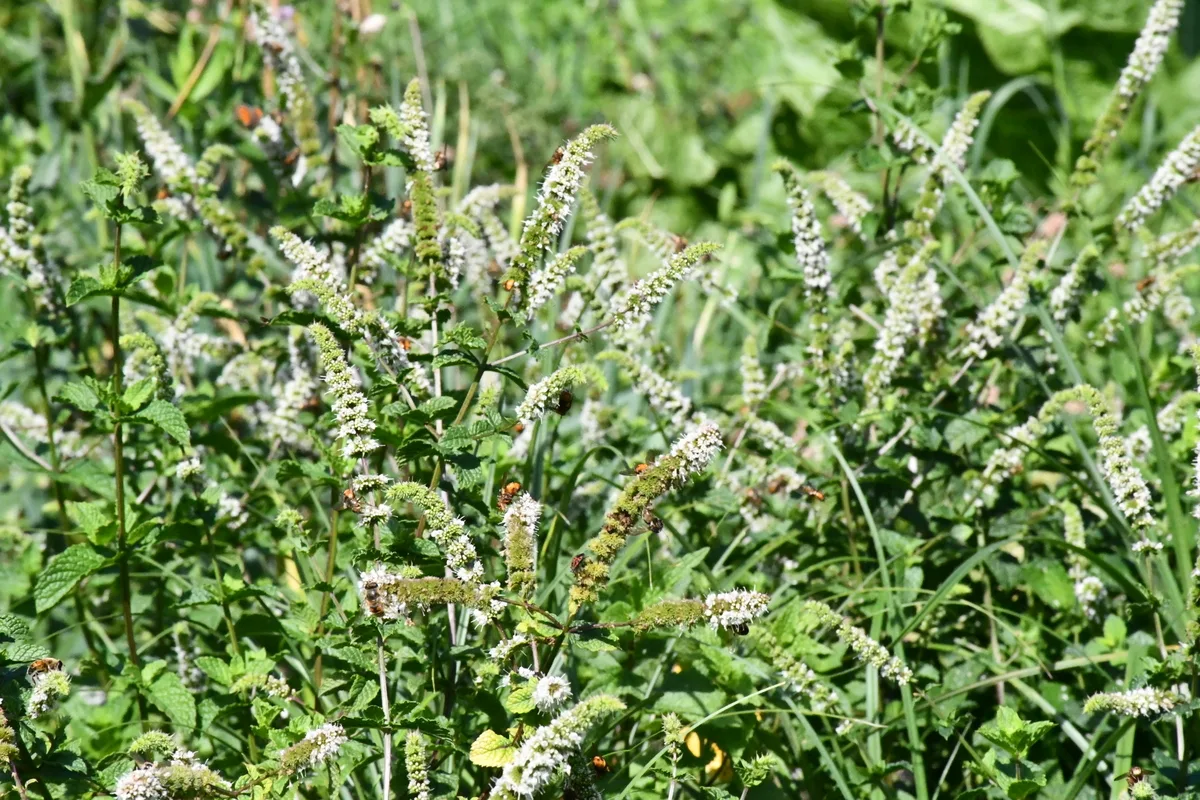
Being a perennial, we would also like to prune this back, but at the moment it’s too early. It’s still teeming with various bees, butterflies and insects who don’t mind the cooler weather.
For the sake of rewilding our garden, we’ll leave it until frosts come. Then we’ll prune it back just like the lemon balm.
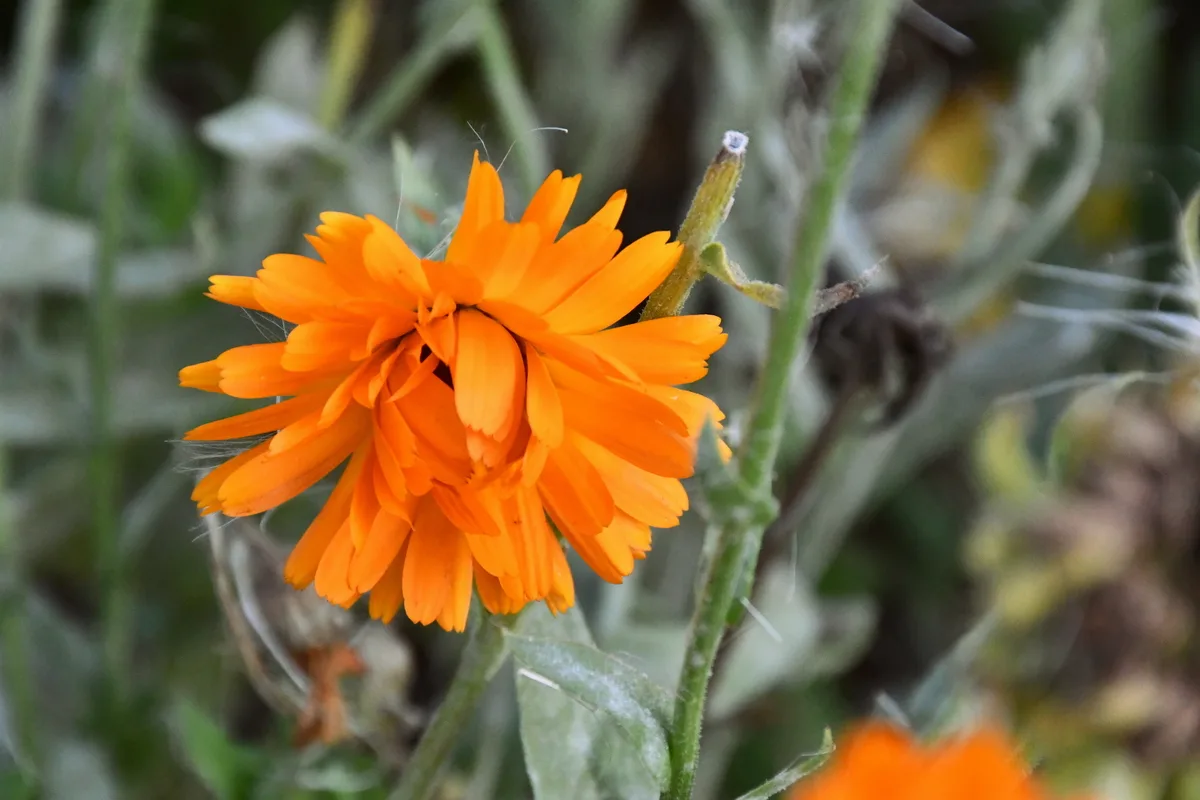
8. Nourish Your Soil With Manure.
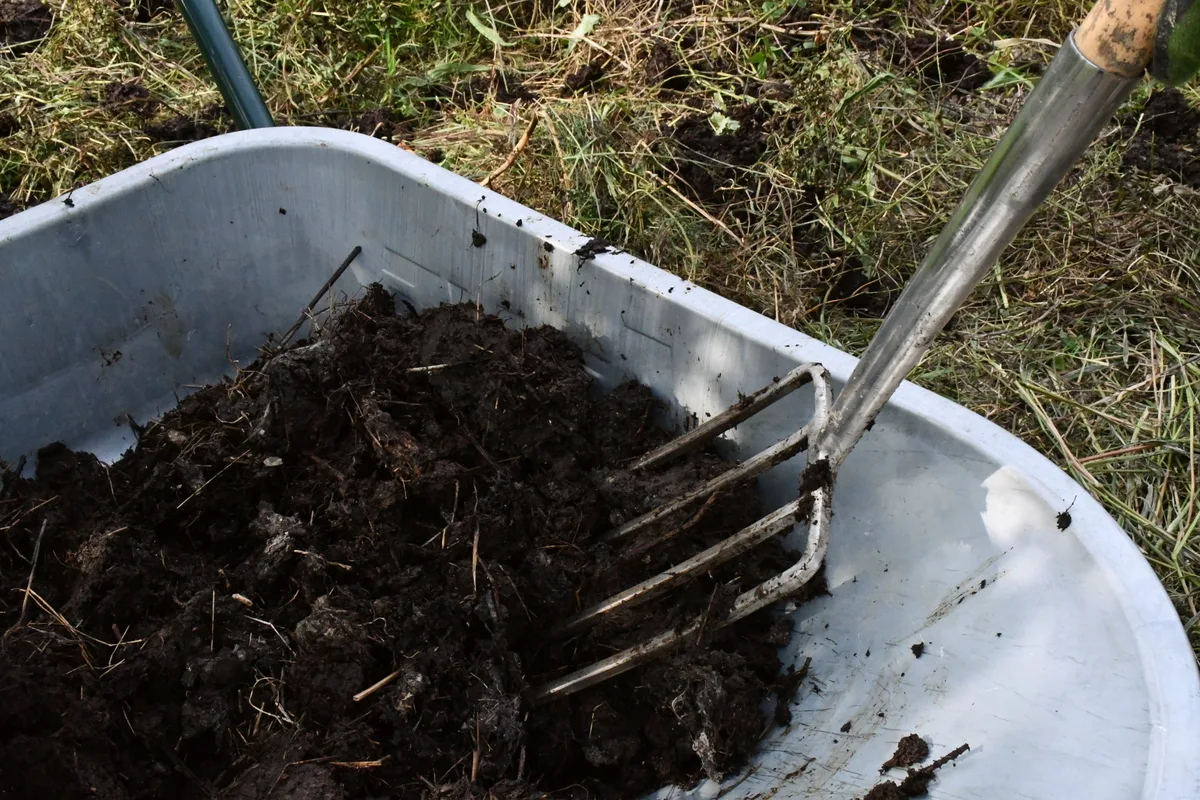
There are so many ways to nourish your soil during the growing season.
By and large, the ultimate way to keep your soil happy and fertile in your no-dig garden is by adding organic matter throughout the season, not just at the end. How you do this, is entirely up to you. It depends on what you can get your hands on, as much as your existing soil conditions.
Seeing as how our compost isn’t ready yet, we’ve chosen to put some manure from the neighbor’s cows on the land. In exchange for scything a patch of nettle (which can also be fertilizer), it was absolutely free.
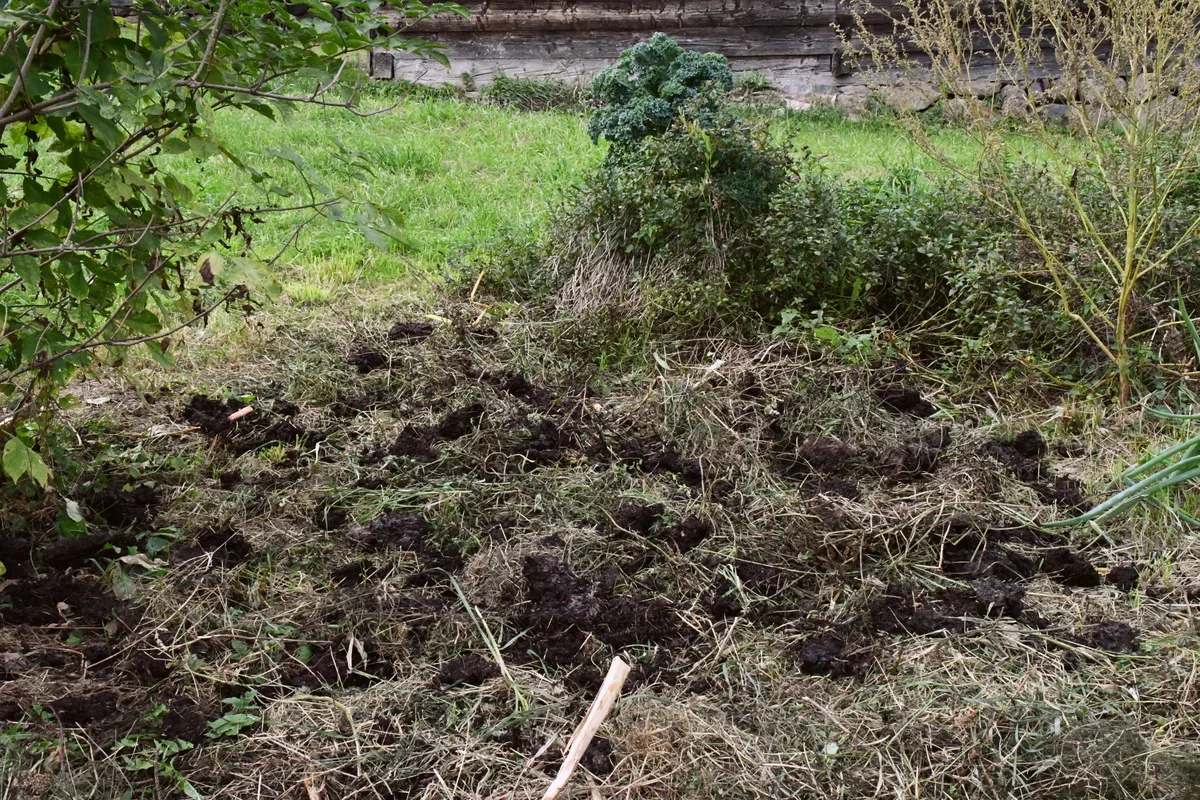
Here, we’ve started with one wheelbarrow of cow manure, but that doesn’t take the garden very far. Due to other obligations at the moment, such as stacking firewood and harvesting apples for winter storage and brandy, the trailer load will have to wait.
Manure in fall or spring?
Since we are done harvesting most everything from our garden, outside of the odd horseradish, fall really is the best time to lay down some manure. This helps to ensure that the nitrogen can be broken down over the coming months, ready for new plants to take up.
It’s not something we apply every year, but this season, for various reasons, we noticed a decline in volume of crops. We felt that a little nutrient boost was needed.
Naturally, one can perform a soil test to see what the soil is lacking. But consider that for a good portion of the farming and gardening past this wasn’t available.
Do as your ancestors would’ve done and engage your intuition. This goes for the amounts of manure you apply as well.
9. Mulch Your No-Dig Garden for Winter.
When it comes down to it, mulch is gold.
No, not in the monetary sense. However, it’s the thing that makes your garden crops grow year after year, as it protects the soil.
Again, your choices of mulch are many.
Now, that it’s fall, autumn leaves will begin to cover the land. If you feel you have too many to leave under the trees, go ahead and haul them to your no-dig garden. You can also turn them into leaf mold if you haven’t heard about that yet.
You can also opt for grass clippings if your lawn has one last mowing in it. Hay and organic straw are always popular options.
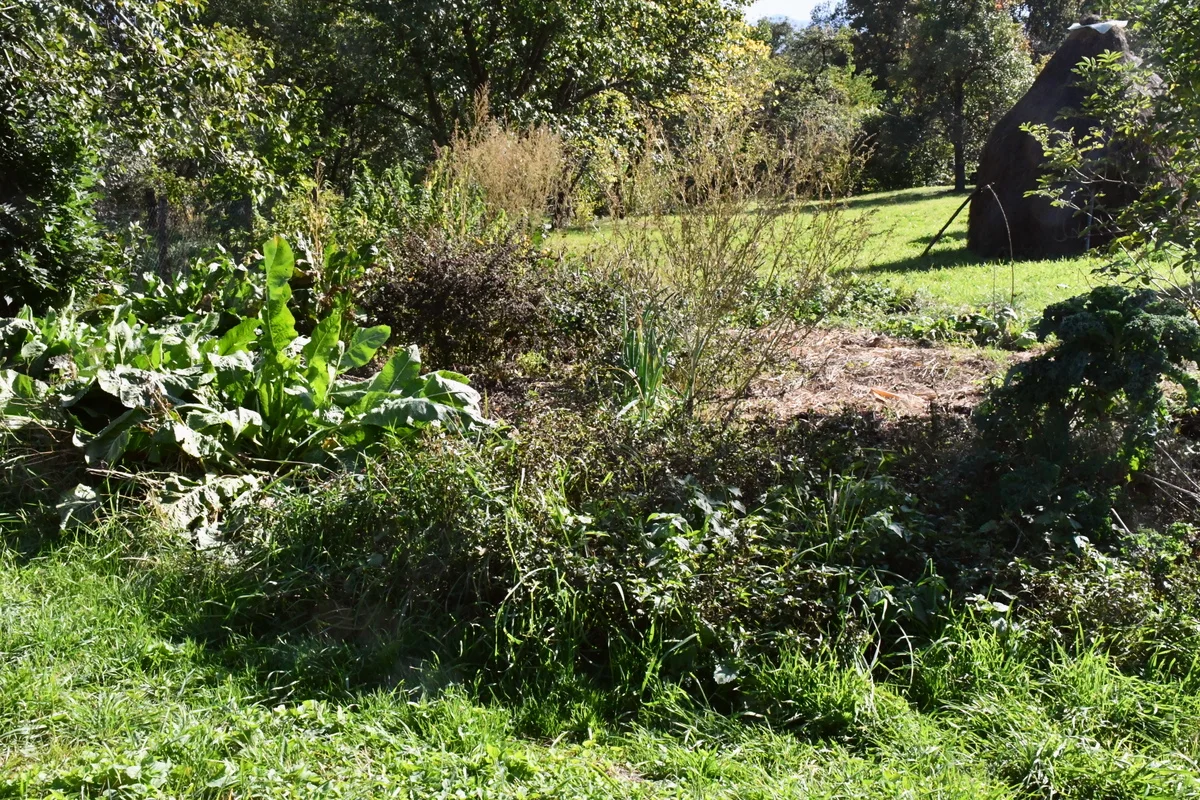
There’s something else you should know about mulching time.
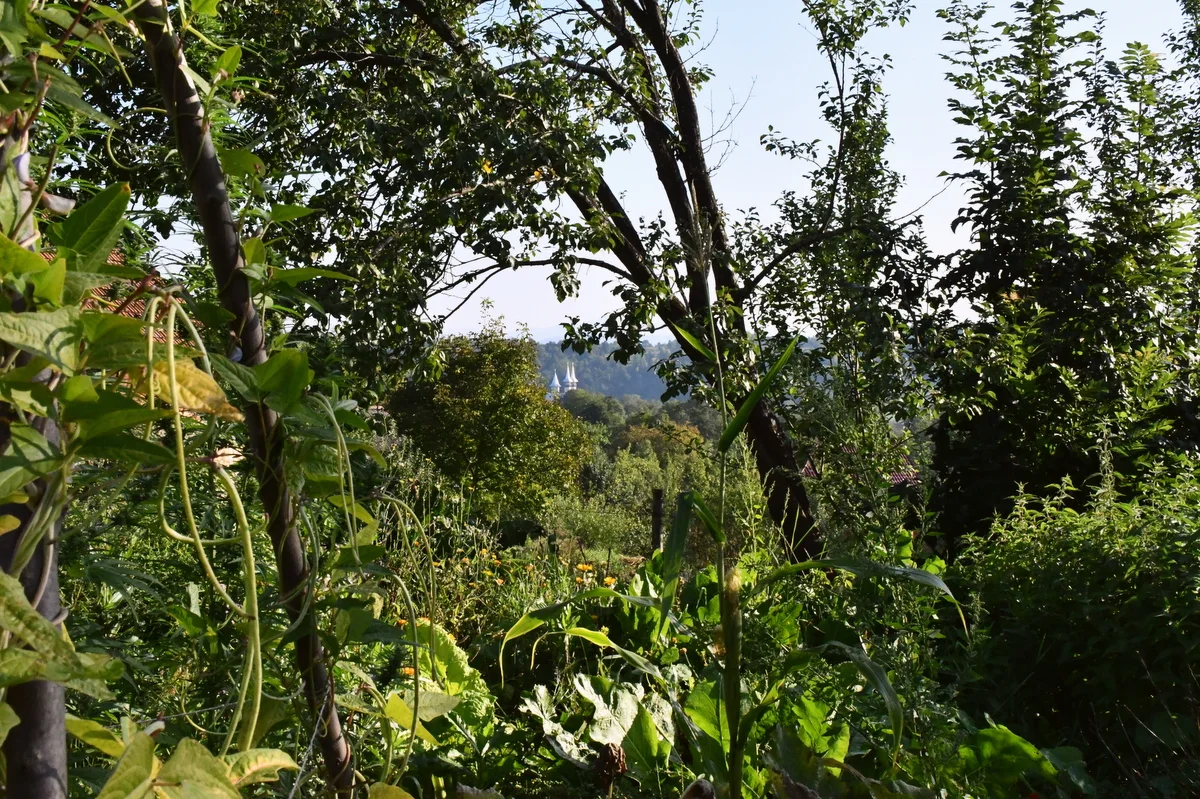
I know a lot of people give up after the second or third year of no-dig gardening. I’ve seen it time and again, and it usually happens right about now.
At some point gardeners think no-dig gardening doesn’t work, or that it doesn’t work for them. So for now, they leave the ground uncovered, already with a vow to till it in spring. It’s a potential mistake to consider.
Before you decide straight out that no-dig gardening doesn’t work, I’d like for you to look at an extremely successful no-dig gardener, take Charles Dowding for example. This man has been no-dig gardening for 40+ years and producing every single year. If he can do it, so can you.
Now, get on with your gardening chores, the first frosts are awaiting.

Get the famous Rural Sprout newsletter delivered to your inbox.
Including Sunday musings from our editor, Tracey, as well as “What’s Up Wednesday” our roundup of what’s in season and new article updates and alerts.

